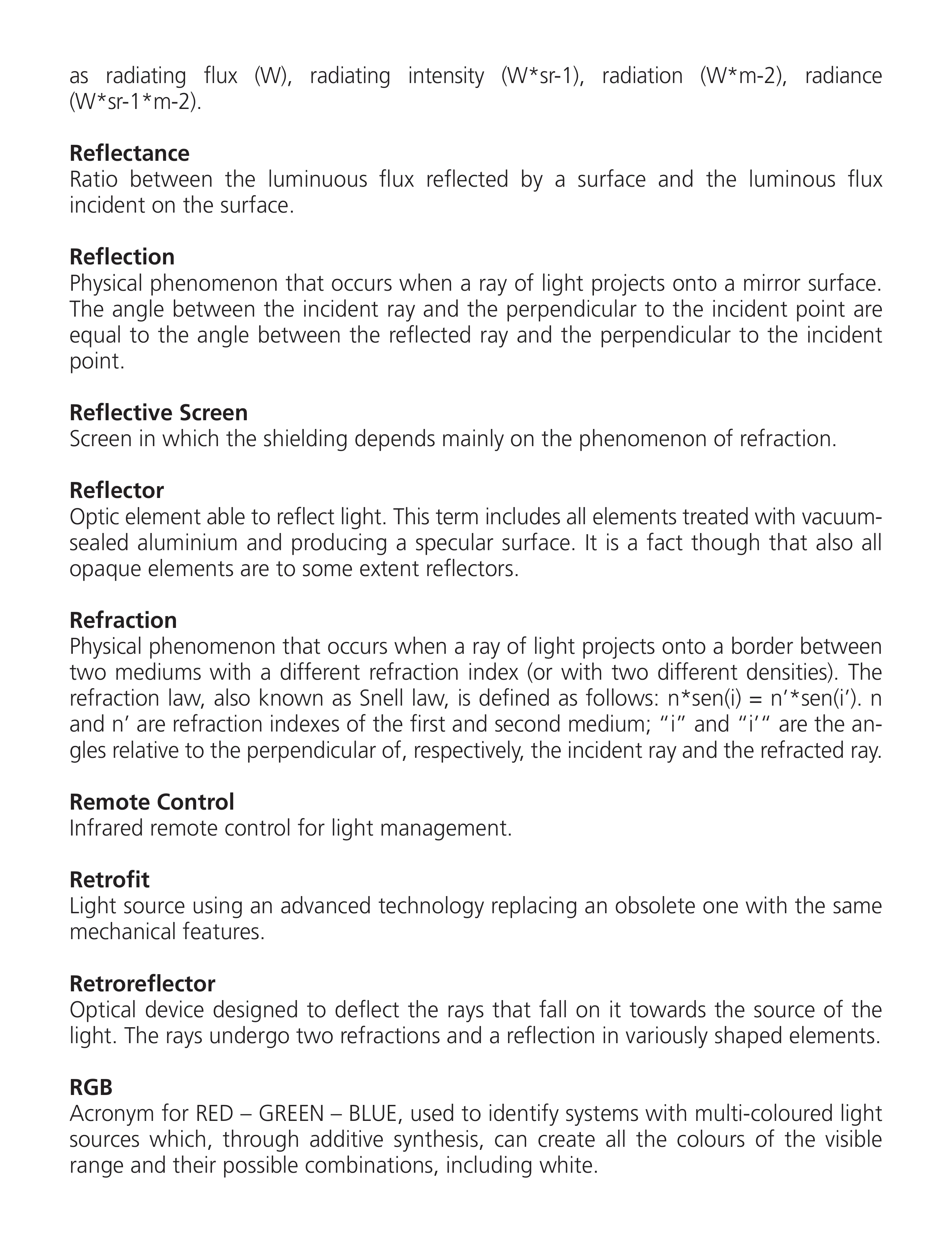as radiating flux (W), radiating intensity (W*sr-1), radiation (W*m-2), radiance
(W*sr-1*m-2).
Reflectance
Ratio between the luminuous flux reflected by a surface and the luminous flux
incident on the surface.
Reflection
Physical phenomenon that occurs when a ray of light projects onto a mirror surface.
The angle between the incident ray and the perpendicular to the incident point are
equal to the angle between the reflected ray and the perpendicular to the incident
point.
Reflective Screen
Screen in which the shielding depends mainly on the phenomenon of refraction.
Reflector
Optic element able to reflect light. This term includes all elements treated with vacuum-
sealed aluminium and producing a specular surface. It is a fact though that also all
opaque elements are to some extent reflectors.
Refraction
Physical phenomenon that occurs when a ray of light projects onto a border between
two mediums with a different refraction index (or with two different densities). The
refraction law, also known as Snell law, is defined as follows: n*sen(i) = n’*sen(i’). n
and n’ are refraction indexes of the first and second medium; “i” and “i’“ are the an-
gles relative to the perpendicular of, respectively, the incident ray and the refracted ray.
Remote Control
Infrared remote control for light management.
Retrofit
Light source using an advanced technology replacing an obsolete one with the same
mechanical features.
Retroreflector
Optical device designed to deflect the rays that fall on it towards the source of the
light. The rays undergo two refractions and a reflection in variously shaped elements.
RGB
Acronym for RED – GREEN – BLUE, used to identify systems with multi-coloured light
sources which, through additive synthesis, can create all the colours of the visible
range and their possible combinations, including white.







